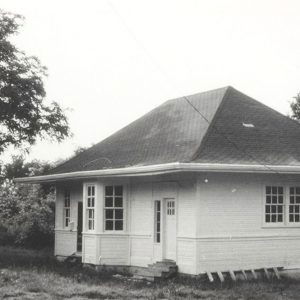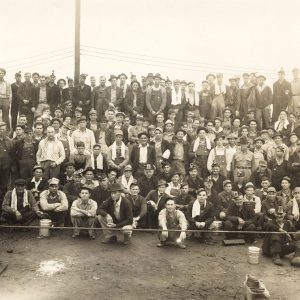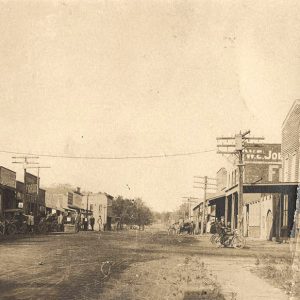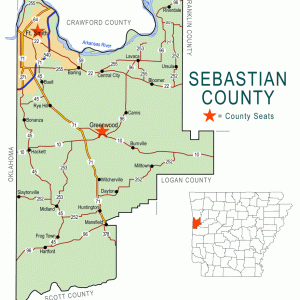calsfoundation@cals.org
Hackett (Sebastian County)
| Latitude and Longitude: | 35º11’25″N 094º24’40″W |
| Elevation: | 538 feet |
| Area: | 1.43 square miles (2020 Census) |
| Population: | 784 (2020 Census) |
| Incorporation Date: | September 19, 1885 |
Historical Population as per the U.S. Census:
| 1810 | 1820 | 1830 | 1840 | 1850 | 1860 | 1870 | 1880 | 1890 | 1900 |
| – | – | – | – | – | – | – | 172 | 458 | 330 |
| 1910 | 1920 | 1930 | 1940 | 1950 | 1960 | 1970 | 1980 | 1990 | 2000 |
| 363 | 398 | 316 | 436 | 440 | 328 | 462 | 505 | 490 | 694 |
| 2010 | 2020 | ||||||||
| 812 | 784 |
Hackett is the second-oldest city in Sebastian County, and at one time it was also the second-largest city in the county. Located at the intersection of State Highways 10 and 45, Hackett is several miles south of Fort Smith (Sebastian County) and is near the state border with Oklahoma.
Hackett is named for Jeremiah Hackett, who established a homestead in western Arkansas Territory in 1834. Hackett—who came from Pomeroy, Ohio—named the community he founded Hickory Grove. As one historian wrote, “It was Mr. Hackett’s custom and delight to give everyone a lot who would build a residence.” Among those who accepted the offer of free land was Ammi Baston Merrill, who came from Ohio with his father, brother, wife, and three sons in about 1848. (More children were born to the Merrills in Arkansas.) Merrill opened the first store in Hickory Grove. A post office was established in 1847 and was named James Fork.
After the Civil War, the small community began to grow. Ben Hackett and Tom McMurtrey established a general store, and Dr. D. B. Johnson ran the post office from his drug store. A Methodist church was built in 1874, and it was joined by a Cumberland Presbyterian church in 1877. The settlers decided to incorporate as a second-class city in 1876 and held an election to choose between the names Johnson and Hackett City. The latter proposal won, but the U.S. Postal Service shortened the name to Hackett.
A coal mine was developed near Hackett by the Missouri, Kansas, and Texas Oil Company in 1882. A branch of the St. Louis–San Francisco Railway was built to Hackett to carry coal from the mine, and the city boomed. During its peak years in the 1880s, it had 400 houses, forty stores, four photograph galleries, four saloons, five restaurants, three blacksmith shops, two livery stables, four lawyers, eleven physicians, and one dentist. A three-story hotel was built at a cost of $6,000, and a newspaper, the Hackett Horseshoe, was begun by James Williams. The first public school in Hackett opened on September 2, 1895.
The boom lasted only about four years, with up to seventeen mines operating near Hackett. Estimates of the peak population of the city range from 3,600 to 4,000. Following the decline of the mines at the end of the boom, residents who remained turned their attention to agriculture, such as cotton. The Clark cotton gin averaged 1,500 bales of cotton between 1902 and 1916. The city was also a center for shipping peaches grown in the area. In 1906, the Midland Valley Railroad was routed through Hackett. A bank was established around 1910, but during the Great Depression, it closed and turned its deposits over to the First National Bank of Fort Smith. A tornado destroyed a brick building in downtown Hackett in 1924, and the following year, a fire destroyed several downtown buildings, including the post office. Fires also destroyed the jail in 1927 and the Forbes Drug Store in 1928; the buildings were not replaced.
Highway 45 was built through Hackett in 1929. At first, the highway had a shale surface, but gravel was added in 1934. A new school building to serve the consolidated school districts of the area was built on the east side of Hackett in 1930. By 1940, some of the area coal mines had reopened, although they were not as productive as they had been during the nineteenth-century boom.
Hackett maintains a school district with an elementary school and a high school; the high school enrollment in 2012 was approximately 290, and the elementary enrollment was approximately 320. The city has four Baptist churches, two Assembly of God congregations, and a United Methodist church. Its sole restaurant is the Main Street Café. Business that closed in the early twenty-first century include Lifoam Industries, which manufactured insulated packaging and containers, and Deer Acres Zoo. Timber and agricultural production remain viable in the area, and many Hackett residents commute to jobs in Fort Smith and Greenwood (Sebastian County). The population of Hackett is predominately white.
For additional information:
“Hackett, an Interesting Town.” The Key 1 (Spring 1966): 11–12.
Heydenreich, J. L. “Vernie.” “Story of Hackett Boom Days Recorded, Town Once Proudly Boasted 400 Stores.” The Key 21 (Summer 1986): 15–16.
Moore, Jerry H., and Lonnie C. Roach. No Smoke, No Soot, No Clinkers. N.p.: Frank Boyd, 1974.
Steven Teske
Butler Center for Arkansas Studies
 Hackett Depot
Hackett Depot  Hackett Miners
Hackett Miners  Hackett Street Scene
Hackett Street Scene  Sebastian County Map
Sebastian County Map 



Comments
No comments on this entry yet.